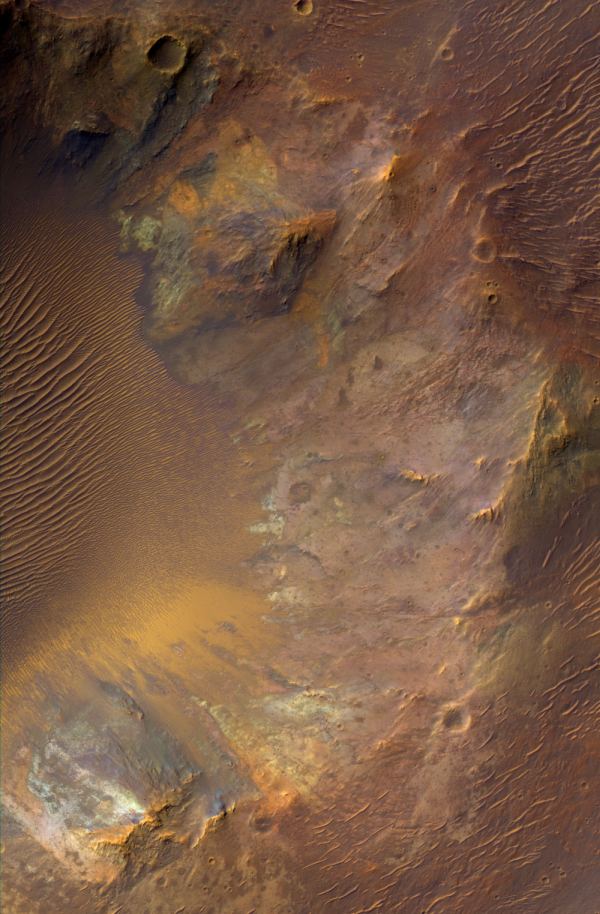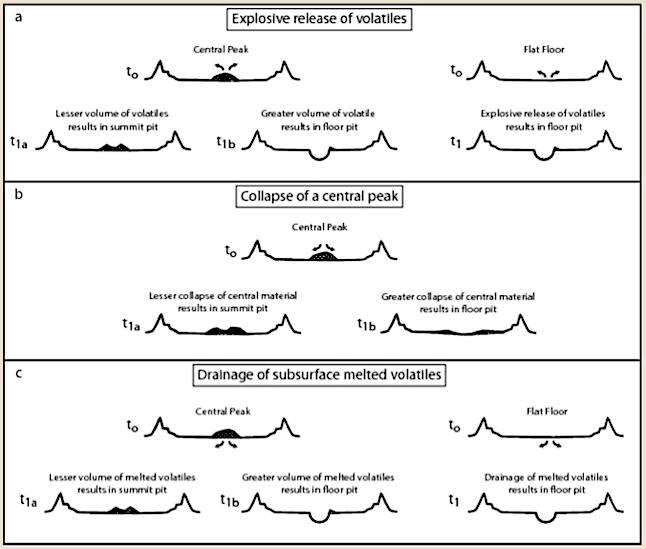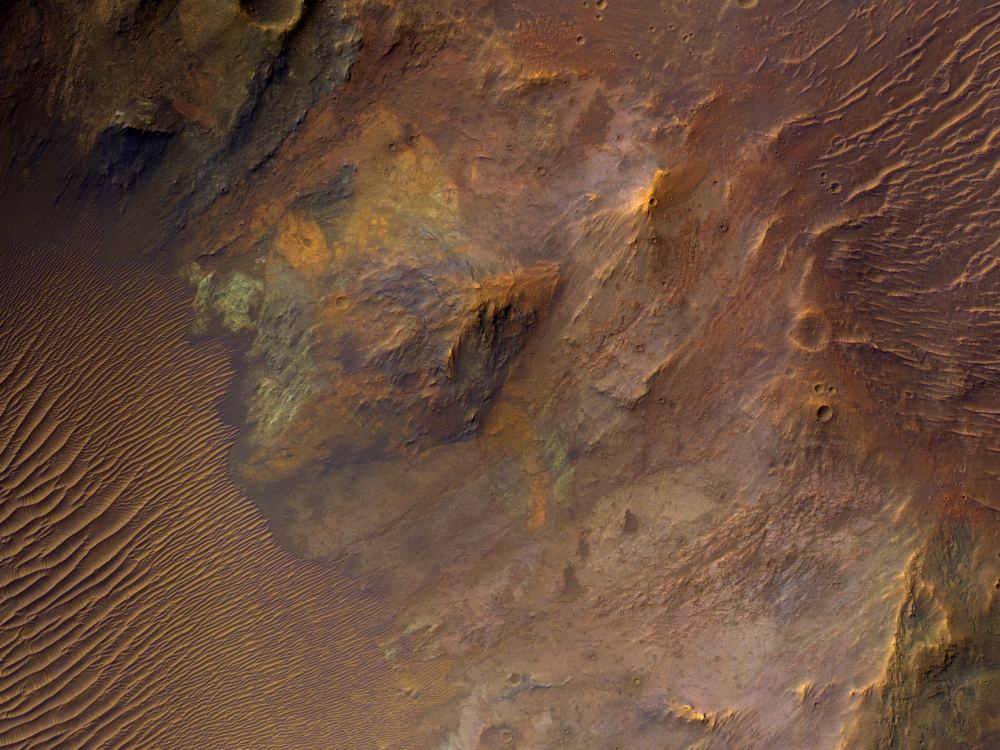Impact craters can be quite complex. Depending on the size of the impactor, and on the size of the planet it strikes, craters form differently. Some form central peaks or uplifted structures, or even pits as seen in this image.
This image is the HiPOD, or the HiRISE (High Resolution Imaging Science Experiment) Picture of the Day. HiPOD’s are a selection of outstanding or particularly significant images of Mars from the HiRISE instrument on NASA’s Mars Reconnaissance Orbiter (MRO).
In this crater the central pit exposes bedrock with different colors. Each different color is a different bedrock “unit” with a different composition. In this crater, the CRISM (Compact Reconnaissance Imaging Spectrometer for Mars) instrument on the MRO identified clay-rich minerals.
NASA also released this cut-out of the eastern half of the central pit.

Larger craters tend to be the most complex, due to the energy involved. The characteristics of the surface material and the underlying material also play a role in the formation of central pits. There are many suggested mechanisms for these central pits, but overall they’re not well understood.
A 2019 paper proposed several mechanisms:
- explosive release of water vapor
- uplift and collapse of rock at the crater centers
- drainage of liquid, produced by the impact, into cracks in the crater floor

That same study couldn’t determine any single cause of these central pits, but suggested that multiple mechanisms may be responsible.
You can follow the HiRISE POD at the HiRISE website.

